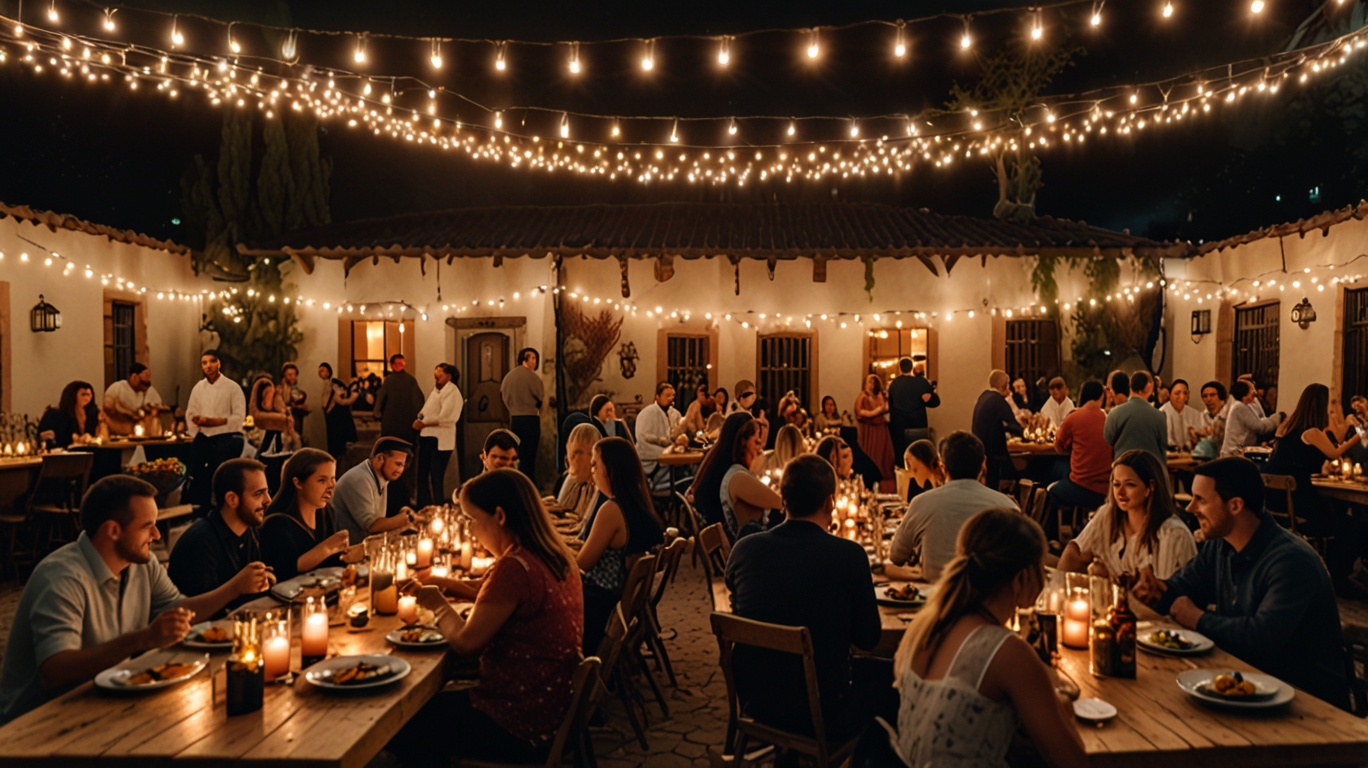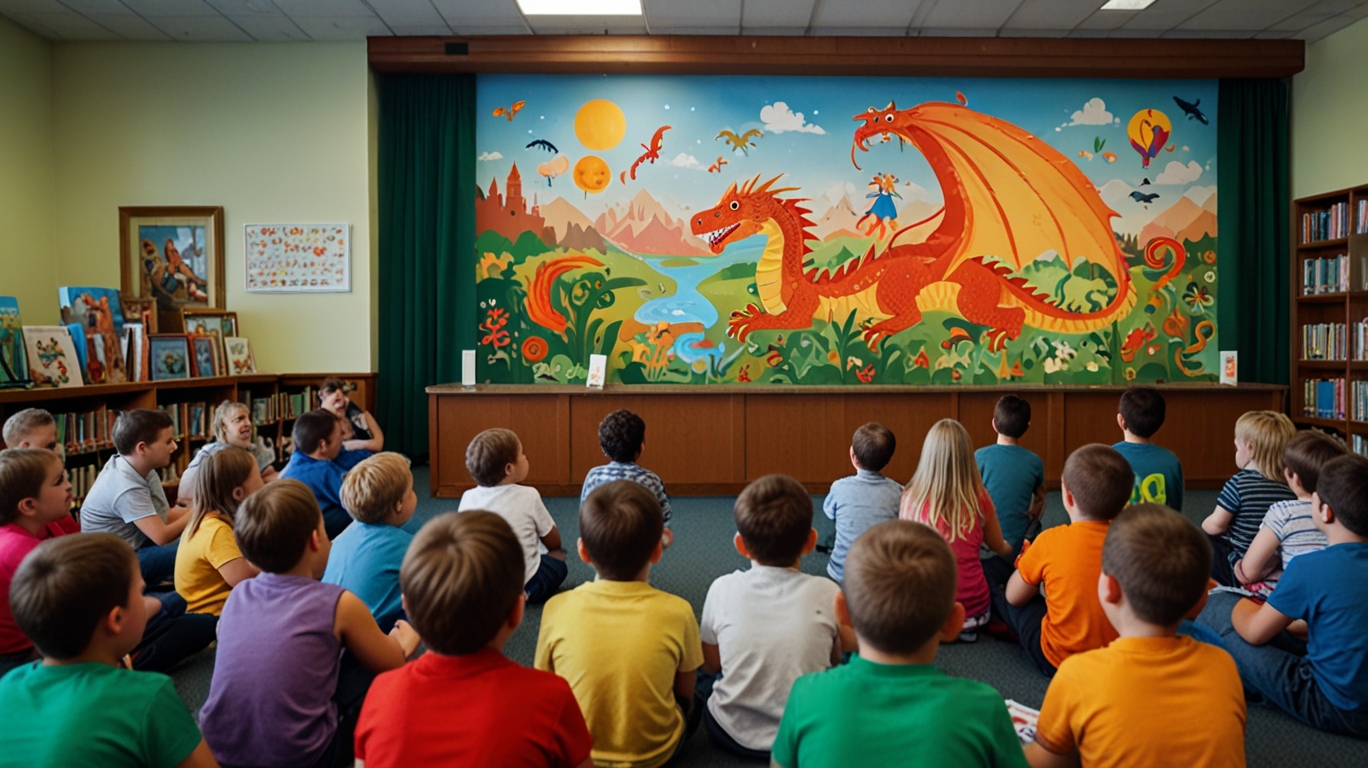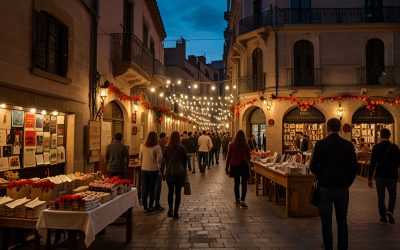How to Celebrate Dia de San Jorge Anywhere in the World


Día de San Jorge, also known as St. George’s Day, is a cultural and religious holiday that has deep roots in European tradition, most notably in Catalonia, Spain, and other regions where St. George is considered a patron saint. The date, April 23rd, holds significance because it is believed to mark the day of St. George’s martyrdom, and over centuries it has evolved into a symbolic occasion that intertwines history, legend, and community. The holiday is best known for its connection to the story of St. George and the dragon, a legend in which George defeats a terrifying beast to save a village and rescue a princess, an act that has come to represent the victory of good over evil, courage over fear, and justice over oppression. In Catalonia, this legend blends beautifully with local customs, transforming the day into more than just a religious event. It has become a cultural celebration of love, literature, and togetherness, marked by the tradition of exchanging roses and books among loved ones. While the holiday is strongest in Catalonia, it is also celebrated in various other countries such as England, Portugal, and parts of Latin America, each region adding its own interpretation. What makes Dia de San Jorge especially appealing is that its themes are universal; you do not have to be in Spain to embrace the symbolism of courage, the joy of giving, and the beauty of literature. Because of this, people around the world can find ways to participate, adapting the traditions to their local culture and making it a holiday that transcends borders, languages, and backgrounds.
Bringing the Tradition of Roses and Books to Your Community

One of the most recognizable customs of Dia de San Jorge is the symbolic exchange of roses and books, a practice that began in Catalonia in the early 20th century and has since become the centerpiece of the celebration. Traditionally, men would gift roses to women as a token of love and admiration, while women would gift books to men as a symbol of knowledge and thoughtfulness. However, as social norms have evolved, the tradition has grown to include everyone regardless of gender, and today people exchange roses and books freely among friends, family members, colleagues, and partners. The gesture is not only romantic but also intellectual, combining the beauty of a flower with the richness of literature. Celebrating this tradition outside of Catalonia is surprisingly easy to do. You can organize a small book swap within your circle of friends, where each person brings a book they’ve loved and pairs it with a rose to gift to someone else. If you are part of a workplace or school, you can set up a community book table decorated with roses where people can pick up and leave books throughout the day. Libraries and bookstores are also wonderful venues to host Dia de San Jorge events, allowing people to celebrate the joy of reading while paying homage to the cultural roots of the holiday. The simple act of pairing a book with a rose brings warmth to relationships and fosters a sense of connection, while also reinforcing the idea that love and knowledge go hand in hand. Even if you live far from Catalonia, you can keep this tradition alive by adapting it to your local environment, whether through intimate gatherings, community events, or even virtual exchanges where books are recommended online and roses are shared symbolically through photos.
Hosting a Cultural Gathering with Food and Music

Another wonderful way to celebrate Dia de San Jorge outside of its birthplace is to bring people together through food, music, and cultural exchange, all of which play a vital role in the festive atmosphere in Catalonia. In many towns and cities in Spain, April 23rd is marked by vibrant street fairs where locals gather to enjoy traditional dishes, listen to music, and participate in cultural events. If you are living abroad, you can recreate this atmosphere by hosting a dinner or gathering inspired by Spanish and Catalan cuisine. Imagine a long table filled with plates of paella, bowls of tapas like patatas bravas, croquettes, and olives, alongside Catalan-style dishes such as escalivada or crema catalana for dessert. Pairing the meal with Spanish wine or cava enhances the authenticity, while background music featuring Spanish guitar or folk melodies helps transport guests to the streets of Barcelona or Girona. For a more interactive celebration, you can make the dinner potluck-style, where each guest brings a dish either inspired by Spain or representing their own culture, allowing the gathering to evolve into a fusion of traditions that honors both Dia de San Jorge and global diversity. Adding live elements, such as inviting a local musician to play guitar or organizing small storytelling performances about St. George’s legend, can turn the event into an immersive cultural experience. Hosting such gatherings strengthens community bonds and helps participants feel that they are part of a larger cultural narrative, even if they are thousands of miles away from Catalonia.
Incorporating the Legend of St. George into Modern Storytelling

At the heart of Dia de San Jorge lies the timeless legend of St. George and the dragon, a tale that has fascinated audiences for centuries and remains a powerful symbol of courage, sacrifice, and triumph over adversity. In its traditional form, the story tells of a village terrorized by a dragon, where St. George appears to slay the beast and rescue the princess, ultimately saving the community. Beyond its mythical elements, this story can be interpreted as a metaphor for the challenges we face in life, where the dragon represents fears, injustices, or obstacles, and St. George embodies the courage to overcome them. Celebrating Dia de San Jorge anywhere in the world provides an opportunity to retell and reinterpret this story in creative ways. Families can adapt it into bedtime stories for children, using the legend to spark conversations about bravery and kindness. Schools and cultural groups can stage plays, puppet shows, or storytelling sessions that bring the dragon and St. George to life, while artists and writers can craft modern reinterpretations of the myth, perhaps setting it in a contemporary context where the “dragon” takes on symbolic meanings like climate change, social inequality, or personal struggles. Writing contests, art exhibitions, or digital storytelling projects can all serve as platforms to explore the themes of the legend while making it relevant to modern audiences. By weaving the tale of St. George into celebrations, communities not only honor the roots of the holiday but also ensure that the values it embodies continue to inspire generations in new and meaningful ways.
Creating Global Connections Through Literature and Culture

Perhaps the most powerful aspect of Dia de San Jorge is its ability to bring people together through shared appreciation of literature and culture, transcending the geographical boundaries of its origins. While the holiday is strongest in Catalonia, its spirit is something that can resonate with people everywhere because books, stories, and symbols of love are universal. In today’s interconnected world, you can celebrate Dia de San Jorge by joining online book clubs, virtual cultural events, or international exchanges that highlight Spanish literature and traditions. Many embassies, cultural institutes, and global organizations now host readings, lectures, and virtual panels dedicated to Spanish writers, poets, and the cultural meaning of the day. Individuals can also celebrate in more personal ways, such as gifting a novel by a Spanish or Catalan author to a friend, reading poetry by Federico García Lorca or Josep Pla, or even learning about Spanish history through literature. Another modern adaptation is to share book and rose recommendations online through social media, encouraging global participation in the tradition. These practices transform the holiday from a regional celebration into a global cultural movement that emphasizes the importance of storytelling, love, and human connection. By embracing Dia de San Jorge no matter where you are, you become part of a worldwide network of people honoring courage, beauty, and knowledge, proving that even local traditions can inspire global unity when celebrated with openness and creativity.
RELATED POSTS
Celebrating Love Through Literature: Why Dia de San Jorge Matters
Dia de San Jorge, or Saint George’s Day, celebrated every year on April 23 in Catalonia, is a festival unlike any other because it unites myth, history, and culture into one vibrant occasion that transforms entire cities into places of joy, learning, and love. Its...
Books and Roses: The Story of Dia de San Jorge in Catalonia
Dia de San Jorge, or Saint George’s Day, celebrated on April 23rd in Catalonia, is deeply rooted in medieval legend and regional identity. The holiday honors Saint George (Sant Jordi in Catalan), a Roman soldier and Christian martyr who, according to legend, slew a...

